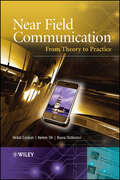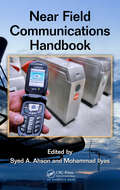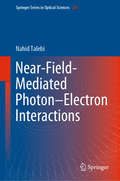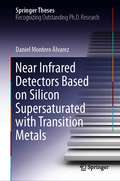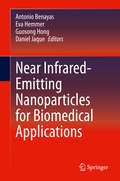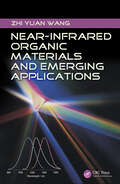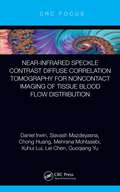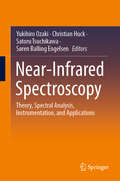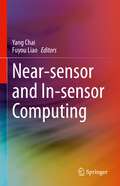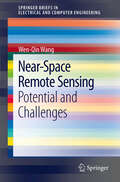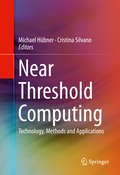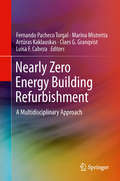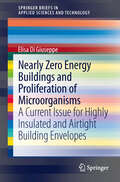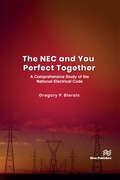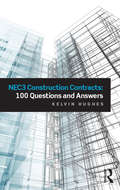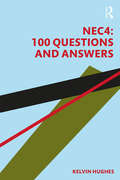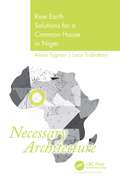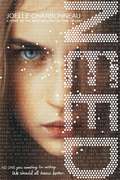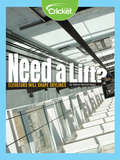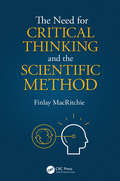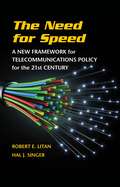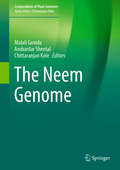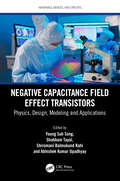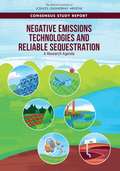- Table View
- List View
Near Field Communication (NFC)
by Vedat Coskun Busra Ozdenizci Kerem OkThis book provides the technical essentials, state-of-the-art knowledge, business ecosystem and standards of Near Field Communication (NFC)by NFC Lab - Istanbul research centre which conducts intense research on NFC technology.In this book, the authors present the contemporary research on all aspects of NFC, addressing related security aspects as well as information on various business models. In addition, the book provides comprehensive information a designer needs to design an NFC project, an analyzer needs to analyze requirements of a new NFC based system, and a programmer needs to implement an application. Furthermore, the authors introduce the technical and administrative issues related to NFC technology, standards, and global stakeholders. It also offers comprehensive information as well as use case studies for each NFC operating mode to give the usage idea behind each operating mode thoroughly. Examples of NFC application development are provided using Java technology, and security considerations are discussed in detail.Key Features:Offers a complete understanding of the NFC technology, including standards, technical essentials, operating modes, application development with Java, security and privacy, business ecosystem analysisProvides analysis, design as well as development guidance for professionals from administrative and technical perspectivesDiscusses methods, techniques and modelling support including UML are demonstrated with real casesContains case studies such as payment, ticketing, social networking and remote shoppingThis book will be an invaluable guide for business and ecosystem analysts, project managers, mobile commerce consultants, system and application developers, mobile developers and practitioners. It will also be of interest to researchers, software engineers, computer scientists, information technology specialists including students and graduates.
Near Field Communications Handbook
by Syed A. Ahson Mohammad IlyasFrom basic concepts to research grade material and future directions, the Near Field Communications Handbook provides comprehensive technical coverage of this rapidly emerging field. Walking readers through emerging applications, it offers a glimpse at a future in which near field communication (NFC) technology is fully integrated into daily life.
Near Field Communications Technology and Applications
by Mike HendryWhether you are a developer, engineer, researcher or student, this practical guide gives you everything you need to know about NFC technology and its applications. You will learn what differentiates NFC from other short-range technologies such as contactless cards, RFID and Bluetooth, as well as discovering the opportunities it provides, from a fast and instinctive user interface with no infrastructure requirements to the world of Secure Elements, Trusted Service Managers, mobile wallets and the Internet of Things. With critical applications in areas including advertising, retail and transportation, this book demonstrates how you can use NFC technology practically to make transactions easier and quicker. All of this is supplemented with an array of in-depth case studies and real-life examples to reinforce your understanding, along with detailed coverage of the problems associated with the wider commercial introduction of NFC and strategies that can be used to aid its future development.
Near-Field-Mediated Photon–Electron Interactions (Springer Series in Optical Sciences #228)
by Nahid TalebiThis book focuses on the use of novel electron microscopy techniques to further our understanding of the physics behind electron–light interactions. It introduces and discusses the methodologies for advancing the field of electron microscopy towards a better control of electron dynamics with significantly improved temporal resolutions, and explores the burgeoning field of nanooptics – the physics of light–matter interaction at the nanoscale – whose practical applications transcend numerous fields such as energy conversion, control of chemical reactions, optically induced phase transitions, quantum cryptography, and data processing.In addition to describing analytical and numerical techniques for exploring the theoretical basis of electron–light interactions, the book showcases a number of relevant case studies, such as optical modes in gold tapers probed by electron beams and investigations of optical excitations in the topological insulator Bi2Se3. The experiments featured provide an impetus to develop more relevant theoretical models, benchmark current approximations, and even more characterization tools based on coherent electron–light interactions.
Near Infrared Detectors Based on Silicon Supersaturated with Transition Metals (Springer Theses)
by Daniel Montero ÁlvarezThis thesis makes a significant contribution to the development of cheaper Si-based Infrared detectors, operating at room temperature. In particular, the work is focused in the integration of the Ti supersaturated Si material into a CMOS Image Sensor route, the technology of choice for imaging nowadays due to its low-cost and high resolution. First, the material is fabricated using ion implantation of Ti atoms at high concentrations. Afterwards, the crystallinity is recovered by means of a pulsed laser process. The material is used to fabricate planar photodiodes, which are later characterized using current-voltage and quantum efficiency measurements. The prototypes showed improved sub-bandgap responsivity up to 0.45 eV at room temperature. The work is further supported by a collaboration with STMicroelectronics, where the supersaturated material was integrated into CMOS-based sensors at industry level. The results show that Ti supersaturated Si is compatible in terms of contamination, process integration and uniformity. The devices showed similar performance to non-implanted devices in the visible region. This fact leaves the door open for further integration of supersaturated materials into CMOS Image Sensors.
Near Infrared-Emitting Nanoparticles for Biomedical Applications
by Daniel Jaque Antonio Benayas Eva Hemmer Guosong HongThis book analyzes and evaluates the growing field of light-emitting nanoprobes as contrast agents for in vivo imaging and sensing. It is a comprehensive resource that critically analyzes the state of the art in an interdisciplinary manner, with a special focus on the shift of emission wavelengths into the near-infrared (NIR) spectral region (ranging from 0.7 to 2 microns), which has greatly contributed to the latest advances in biomedical imaging and sensing. This book discusses merits of different contrast agents at nanoscale, and how their unique chemical and structural properties lead to the emission and interaction of light within the NIR window. Both the NIR-emitting materials and various surface modification strategies governing their interactions with the biological system at the “nano” level are discussed. Furthermore, different experimental techniques and protocols for NIR-light-based in vivo imaging and sensing are addressed to shed light on further understanding of the advantages and limitations of each category of these nanoprobes. Assembles the state of the art heretofore appearing in scientific literature into a comprehensive, multi-perspective guidebook on near infrared-emitting nanomaterials in an assortment of biomedical applications;Explains the physical, chemical, and biological phenomena underlying near infrared-emitting nanomaterials for biomedical applications;Presents conceptual and experimental approaches surrounding a unique spectral range of light emission from nanosized contrast agents, while offering a clear explanation of basic and general phenomena regarding the interaction between light and biological tissues, such as absorption, scattering and autofluorescence.
Near-Infrared Organic Materials and Emerging Applications
by Zhi Yuan WangTo physicists and chemists, color means light-emission, absorption, spectrum, and coloration. Near-Infrared Organic Materials and Emerging Applications presents knowledge and applications of invisible "colored" organic materials. Near-infrared (NIR) materials are defined as substances that interact with NIR light, namely, absorption and reflection,
Near-infrared Speckle Contrast Diffuse Correlation Tomography for Noncontact Imaging of Tissue Blood Flow Distribution
by Daniel Irwin Siavash Mazdeyasna Chong Huang Mehrana Mohtasebi Xuhui Lui Lei Chen Guoqiang YuImaging of tissue blood flow (BF) distributions provides vital information for the diagnosis and therapeutic monitoring of various vascular diseases. The innovative near-infrared speckle contrast diffuse correlation tomography (scDCT) technique produces full 3D BF distributions. Many advanced features are provided over competing technologies including high sampling density, fast data acquisition, noninvasiveness, noncontact, affordability, portability, and translatability across varied subject sizes. The basic principle, instrumentation, and data analysis algorithms are presented in detail. The extensive applications are summarized such as imaging of cerebral BF (CBF) in mice, rat, and piglet animals with skull penetration into deep brain. Clinical human testing results are described by recovery of BF distributions on preterm infants (CBF) through incubator wall, and on sensitive burn tissues and mastectomy skin flaps without direct device-tissue interactions. Supporting activities outlined include integrated capability for acquiring surface curvature information, rapid 2D blood flow mapping, and optimizations via tissue-like phantoms and computer simulations. These applications and activities both highlight and guide the reader as to the expected abilities and limitations of scDCT for adapting into their own preclinical/clinical research, use in constrained environments (i.e., neonatal intensive care unit bedside), and use on vulnerable subjects and measurement sites.
Near-Infrared Spectroscopy: Theory, Spectral Analysis, Instrumentation, and Applications
by Yukihiro Ozaki Christian Huck Satoru Tsuchikawa Søren Balling EngelsenThis book provides knowledge of the basic theory, spectral analysis methods, chemometrics, instrumentation, and applications of near-infrared (NIR) spectroscopy—not as a handbook but rather as a sourcebook of NIR spectroscopy. Thus, some emphasis is placed on the description of basic knowledge that is important in learning and using NIR spectroscopy. The book also deals with applications for a variety of research fields that are very useful for a wide range of readers from graduate students to scientists and engineers in both academia and industry. For readers who are novices in NIR spectroscopy, this book provides a good introduction, and for those who already are familiar with the field it affords an excellent means of strengthening their knowledge about NIR spectroscopy and keeping abreast of recent developments.
Near-sensor and In-sensor Computing
by Yang Chai Fuyou LiaoThis book provides a detailed introduction to near-sensor and in-sensor computing paradigms, their working mechanisms, development trends and future directions. The authors also provide a comprehensive review of current progress in this area, analyze existing challenges in the field, and offer possible solutions. Readers will benefit from the discussion of computing approaches that intervene in the vicinity of or inside sensory networks to help process data more efficiently, decreasing power consumption and reducing the transfer of redundant data between sensing and processing units.Provides readers with a detailed introduction to the near-sensor and in-sensor computing paradigms;Includes in-depth and comprehensive summaries of the state-of-the-art development in this field;Discusses and compares various neuromorphic sensors and neural networks:Describes integration technology for near-/in-sensor computing;Reveals the relationship between near-/in-sensor computing and other computing paradigms, such as neuromorphic computing, edge computing, intuitive computing, and in-memory computing.
Near-Space Remote Sensing
by Wen-Qin WangNear-space is defined as the atmospheric region from about 20 kilometer (km) altitude to 100 km altitude above the Earth's surface. It has received much attention in recent years and several types of near-space vehicles are currently being studied, developed, or employed. "Near-Space Remote Sensing: Potential and Challenges" concentrates mainly on the role of near-space vehicles in bridging the gap between satellites and airplanes for microwave remote sensing applications, providing a top-level system description and aiming to encourage further research. Further, this book also describes several potential applications such as passive surveillance, reconnaissance, and high resolution wide swath remote imaging. The book is intended for geographers, transportation engineers and other researchers involved in remote sensing development and applications, in particular for near-space vehicles. Wen-Qin Wang is an assistant professor at the School of Communication and Information Engineering, University of Electronic Science and Technology of China.
Near Threshold Computing
by Michael Hübner Cristina SilvanoThis book explores near-threshold computing (NTC), a design-space using techniques to run digital chips (processors) near the lowest possible voltage. Readers will be enabled with specific techniques to design chips that are extremely robust; tolerating variability and resilient against errors. Variability-aware voltage and frequency allocation schemes will be presented that will provide performance guarantees, when moving toward near-threshold manycore chips. · Provides an introduction to near-threshold computing, enabling reader with a variety of tools to face the challenges of the power/utilization wall; · Demonstrates how to design efficient voltage regulation, so that each region of the chip can operate at the most efficient voltage and frequency po∫ · Investigates how performance guarantees can be ensured when moving towards NTC manycores through variability-aware voltage and frequency allocation schemes.
Nearly Zero Energy Building Refurbishment
by Fernando Pacheco Torgal Marina Mistretta Artūras Kaklauskas Claes G. Granqvist Luisa F. CabezaThe recast of the Energy Performance of Buildings Directive (EPBD) was adopted by the European Parliament and the Council of the European Union on 19 May 2010. For new buildings, the recast fixes 2020 as the deadline for all new buildings to be "nearly zero energy" (and even sooner for public buildings - by the end of 2018). This book gives practitioner an important tool to tackle the challenges of building refurbishment towards nearly zero energy. This book is welcome at this time and sets the scene for professionals whether practitioners or researchers to learn more about how we can make whether old or new buildings more efficient and effective in terms of energy performance.
Nearly Zero Energy Buildings and Proliferation of Microorganisms
by Elisa Di GiuseppeThis book provides a concise review of the thermo-physical phenomena which regulate heat and moisture transportation in Nearly Zero Energy Buildings envelopes, and their relationship with the growth of biological organisms. It describes the main microorganisms proliferating on contemporary building elements and within buildings. It also states the consequences of biological growth on durability, aesthetics and human health; and provides the main methods for the analytical and experimental evaluation of proliferation. Finally, through the review of recent developments, remedial actions to counter the biological phenomenon are examined, and an outline is provided for future innovations in a field not yet widely investigated.
The NEC and You Perfect Together: A Comprehensive Study of the National Electrical Code
by Gregory P. BieralsThis book uses a unique approach of identifying the terms defined in NEC Article 100 and connecting these definitions to the appropriate sections in Chapters 1 through 9, with detailed explanations that will serve to enhance the reader’s understanding of this complex subject. This volume contains extensive information on the following: Branch Circuits Feeders Services Overcurrent Protection Grounding Systems and Equipment Bonding Impedance Grounded Systems Separately Derived Systems Functional Grounding Calculating Ground-Fault Currents Motors, Motor Circuits, and Controllers Transformers Health Care Facilities Hazardous (Classified) Locations Information Technology Equipment Emergency Systems Tables and Examples Readership: Anyone involved in the design and installation of the electrical systems in residential, commercial, institutional, and industrial facilities.
NEC3 Construction Contracts: 100 Questions And Answers
by Kelvin HughesWhich member of the NEC3 family of contracts should I use? How do I choose and use my main and secondary options? What are the roles and responsibilities of the various parties? How should I effectively manage early warnings and compensation events? Important questions can arise when working with NEC3 contracts, some of them have simple answers and others require more a detailed response. Whether you are an NEC3 beginner or an expert, the 100 questions and answers in this book are a priceless reference to have at your fingertips. Covering issues that can arise from the full range of NEC3 forms, Kelvin Hughes draws on questions he has been asked during his 20 years working with NEC and presenting training courses to advise, warn of common mistakes, and explain in plain English how these contracts are meant to be used.
NEC4: 100 Questions and Answers
by Kelvin HughesThis book details some of the most important and interesting questions raised about the NEC4 family of contracts and provides clear, comprehensive answers to those questions. Written by an NEC expert with over 20 years’ experience using, advising and training others, the book has several distinctive features: It covers the whole NEC4 family It is written by a very experienced NEC author who explains sometimes complex issues in a simple and accessible style The questions and answers range from beginner level up to a masterclass level The questions are real life questions asked by actual NEC practitioners on real projects. The book includes questions and answers relating to tendering, early warnings, programme issues, quality management, payment provisions, compensation events, liabilities, insurances, adjudication, termination and much more. It is essential reading for anyone working with the NEC4 family of contracts, whether professionals or students in construction, architecture, project management and engineering.
Necessary Architecture: Raw Earth Solutions for a Common House in Niger
by Alisia Tognon Luca TrabattoniNiger is sand, light, and heat. Starting from the necessity of the Mission Catholique du Dosso, which has worked in Niger for several years, this book speaks about the Nigerien situation which is characterized by a countrywide spread of poverty. Along with studying the country’s environmental, geographical conditions, the book discusses raw earth architecture in both vernacular and contemporary contexts. A number of the most common techniques are described. The possibilities for these methods to adapt to the contemporary language of architecture without losing the technical and physical benefits inherent in them are illustrated. The book embraces some topics that are not common but highly relevant in the Developing World, such as identity through the evolution of architecture and the value of transmitting knowledge related to the vernacular building process. Nowadays, Niger’s condition is characterized by a lack of resources, both physical and cultural. Earthen technology appears to be a valid solution in this situation for the creation of an environmentally sustainable approach. The book aims to provide an overview of the possibility of constructing new buildings related to the climate and traditional context, applying vernacular technology and solutions in a contemporary application. Providing a balance between teaching vernacular knowledge and the contemporary architectural language could help face this out-of-resource situation, aiming to get comfortable and affordable living spaces.
NEED
by Joelle Charbonneau"No one gets something for nothing. We all should know better." Teenagers at Wisconsin's Nottawa High School are drawn deeper into a social networking site that promises to grant their every need . . . regardless of the consequences. Soon the site turns sinister, with simple pranks escalating to malicious crimes. The body count rises. In this chilling YA thriller, the author of the best-selling Testing trilogy examines not only the dark side of social media, but the dark side of human nature.
Need a Lift?
by Maria Parrott-RyanBig cities will soon boast supertall and megatall skyscrapers. This means we’ll need elevators that can safely handle them! Engineers are busy rising to the challenge of designing high tech elevators to help people reach these new heights.
The Need for Critical Thinking and the Scientific Method
by Finlay MacRitchieThe book exposes many of the misunderstandings about the scientific method and its application to critical thinking. It argues for a better understanding of the scientific method and for nurturing critical thinking in the community. <P><P>This knowledge helps the reader to analyze issues more objectively, and warns about the dangers of bias and propaganda. The principles are illustrated by considering several issues that are currently being debated. These include anthropogenic global warming (often loosely referred to as climate change), dangers to preservation of the Great Barrier Reef, and the expansion of the gluten-free food market and genetic engineering.
The Need for Speed: A New Framework for Telecommunications Policy for the 21st Century
by Hal J. Singer Robert E. LitanThe twenty-first-century telecommunications landscape is radically different from the one that prevailed as recently as the last decade of the twentieth century. <P><P>Robert Litan and Hal Singer argue that given the speed of innovation in this sector, the Federal Communications Commission's outdated policies and rules are inhibiting investment in the telecom industry, specifically in fast broadband networks. This pithy handbook presents the kind of fundamental rethinking needed to bring communications policy in line with technological advances.Fast broadband has huge societal benefits, enabling all kinds of applications in telemedicine, entertainment, retailing, education, and energy that would have been unthinkable a few years ago. Those benefits would be even greater if the FCC adopted policies that encouraged more broadband providers, especially wireless providers, to make their services available in the roughly half of the country where consumers currently have no choice in wireline providers offering download speeds that satisfy the FCC's current standards.The authors' recommendations include allowing broadband providers to charge for premium delivery services; embracing a rule-of-reason approach to all matters involving vertical arrangements; stripping the FCC of its merger review authority because both the Federal Trade Commission and the Justice Department have the authority to stop anticompetitive mergers; eliminating the FCC's ability to condition spectrum purchases on the identity, business plans, or spectrum holdings of a bidder; and freeing telephone companies from outdated regulations that require them to maintain both a legacy copper network and a modem IP network.These changes and others advanced in this book would greatly enhance consumer welfare with respect to telecommunications services and the applications built around them.
The Neem Genome (Compendium of Plant Genomes)
by Chittaranjan Kole Malali Gowda Ambardar SheetalThis book describes the sequencing efforts for Neem (Azadirachta indica A. Juss), one of the most versatile tropical evergreen tree species. The neem tree is a source of various natural products, including the potent biopesticide azadirachtin and limonoids, which have a broad spectrum of activity against insect pests and microbial pathogens. To identify genes and pathways in neem, three neem genomes and several transcriptomes are studied using next-generation sequencing technologies.Neem has been extensively used in Ayurveda, Unani and homoeopathic medicine and is often referred to as the ‘village pharmacy’ by natives due to its wealth of medicinal properties.Besides the description of the genome, this book discusses the neem microbiome and its role in the production of neem metabolites like salanin, nimbin and exopy-azadirachtin under in vitro conditions. It also highlights cell and tissue culture using various neem explants including the leaf, root, shoot, cambium, etc.
Negative Capacitance Field Effect Transistors: Physics, Design, Modeling and Applications (Materials, Devices, and Circuits)
by Young Suh Song Shubham Tayal Shiromani Balmukund Rahi Abhishek Kumar UpadhyayThis book aims to provide information in the ever-growing field of low-power electronic devices and their applications in portable devices, wireless communication, sensor, and circuit domains. Negative Capacitance Field Effect Transistors: Physics, Design, Modeling and Applications discusses low-power semiconductor technology and addresses state-of-the-art techniques such as negative capacitance field effect transistors and tunnel field effect transistors. The book is split into three parts. The first part discusses the foundations of low-power electronics, including the challenges and demands and concepts such as subthreshold swing. The second part discusses the basic operations of negative capacitance field effect transistors (NCFETs) and tunnel field effect transistors (TFETs). The third part covers industrial applications including cryogenics and biosensors with NC-FET. This book is designed to be a one-stop guide for students and academic researchers, to understand recent trends in the IT industry and semiconductor industry. It will also be of interest to researchers in the field of nanodevices such as NC-FET, FinFET, tunnel FET, and device–circuit codesign.
Negative Emissions Technologies and Reliable Sequestration: A Research Agenda
by National Academies of Sciences Engineering MedicineTo achieve goals for climate and economic growth, “negative emissions technologies” (NETs) that remove and sequester carbon dioxide from the air will need to play a significant role in mitigating climate change. Unlike carbon capture and storage technologies that remove carbon dioxide emissions directly from large point sources such as coal power plants, NETs remove carbon dioxide directly from the atmosphere or enhance natural carbon sinks. Storing the carbon dioxide from NETs has the same impact on the atmosphere and climate as simultaneously preventing an equal amount of carbon dioxide from being emitted. Recent analyses found that deploying NETs may be less expensive and less disruptive than reducing some emissions, such as a substantial portion of agricultural and land-use emissions and some transportation emissions. In 2015, the National Academies published Climate Intervention: Carbon Dioxide Removal and Reliable Sequestration, which described and initially assessed NETs and sequestration technologies. This report acknowledged the relative paucity of research on NETs and recommended development of a research agenda that covers all aspects of NETs from fundamental science to full-scale deployment. To address this need, Negative Emissions Technologies and Reliable Sequestration: A Research Agenda assesses the benefits, risks, and “sustainable scale potential” for NETs and sequestration. This report also defines the essential components of a research and development program, including its estimated costs and potential impact.
